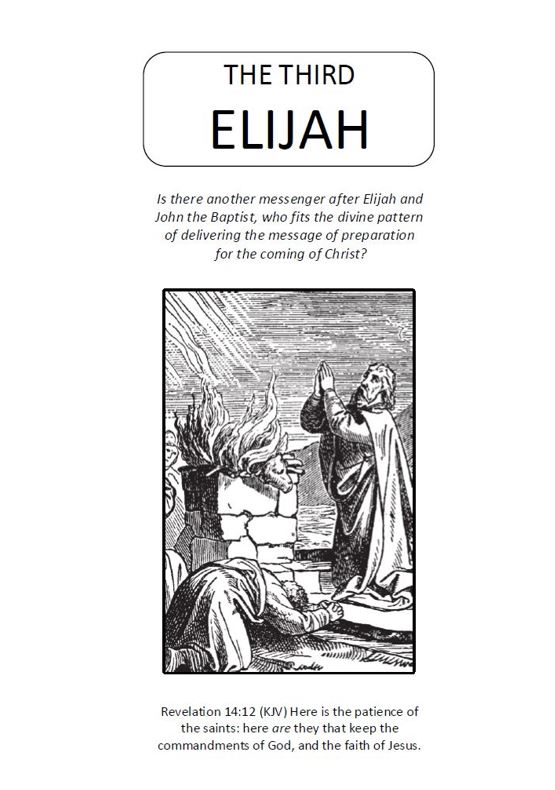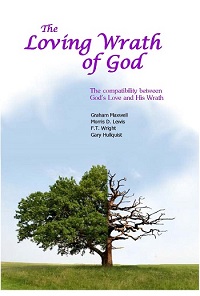Is the Son "co-eternal" with God the Father?
The knee-jerk answer to this question is usually an emphatic yes, or no. Yet, ANY answer is founded in ones perception, and definition of "Time" and "Eternity". A short list of possible answers to this question would be the following:
1. Yes, the Son is "co-eternal" with God the Father based on agreed biblical definitions.
2. No, the Son is not "co-eternal" with God the Father based on agreed biblical definitions.
3. Yes, and No: the Son is "co-eternal" with God the Father, according to one biblical definition, and NOT co-eternal according to another definition.
4. All definitions of co-eternity involve non-biblical speculations, and therefore cannot be argued, or proven one way or the other.
The above answers, (while not exhaustive), represent at least one major disagreement between modern SDA Trinitarians, and non-Trinitarians. The official statement of beliefs since 1980 argue in favor of "co-eternity". Most, if not all non-Trinitarian SDA's disagree with the "official" definition of co-eternity. Both sides maintain their belief to be the only Biblical perspective. It is not the purpose of this blog to examine the bible verses about "eternity". Others have already done this much better than I. The purpose of this blog is to trace the five stages of Christological development within Adventism specifically related to the "begotten" and co-eternal question. The primary question: Were W. W. Prescott's views regarding co-eternal Sonship the truth, or error?
Perceptions of historical facts are like DNA, no two persons have identically the same. Similar to Bible study, one could spend a lifetime immersed in SDA history, and still only be scratching the surface of it's depth and meaning. Much has been written in modern times about HOW, WHY, and WHEN, Adventism changed her doctrine about the identity of God. I would like to give a brief overview from my personal perspective. No one need be offended if you disagree with this perspective and assessment. It is not my desire to "step on the toes" of previous, and valuable research. Nor, do I purpose to "reference" quotations and "proofs" for every particular of the historical story for the sake of continuity, and brevity.
Modern SDA scholars, and church historians have generally admitted (since the 21st Century) that the early Adventists were in basic agreement in professing an anti-, or non-Trinitarian belief. In other words, from the beginning of the movement, SDA's rejected ALL Trinitarian creeds, and developed there own theology about God, Christology, and the Holy Spirit. While it is generally agreed that the early SDA's were unified in a non-Trinitarian theology, another question arises. Did this doctrinal position about God, His Son, and the Holy Spirit remain static (entirely unchanged), or were there clarifications and changes in emphasis, or even substance?
STAGE NUMBER ONE: Christ, a created being in eternity. The Son had a beginning, and is not co-eternal with the Father.
Modern scholars are quick to point out that Uriah Smith believed early on that Christ was a "created" being (1865, D.R. p.91). While Smith used the created term in a qualified sense, few modern SDA non-Trinitarians could subscribe to this belief. Some modern non-Trinitarian SDA's would claim that U. Smith was the ONLY SDA to believe this. Even W. W. Prescott said during the 1919 bible conference, "For a long time we believed…that Christ was created, in spite of what the Scripture says" (1919 Bible conf p.62) Without further research we are unable to determine whether it was a few, many, or even most who believed the same as Smith in the early years of the movement.
STAGE NUMBER TWO: Begotten, not created in eternity. The Son had a beginning, and is not co-eternal with the Father.
Although we cannot pin a specific date upon the transition, we do know that during the 1870's and 1880's, SDA writers believed in a "begotten", not created, Son IN eternity. This doctrinal clarification, modification, or "change" (depending on your perspective), has been minimized by some modern SDA non-Trinitarians. A "begotten" rather than a "created" Son is a much better position. Yet, nearly ALL SDA's who articulated this position, did so by confusing "time" with "eternity".
Many view the biblical definition of "time" as linear infinity of years in the past, and linear infinity of years in the future. An alternative to this view is that "time" itself is an element of creation, of which God pre-exists, and is NOT subjected to the limits and constraints thereof. With this view, "eternity" is literally "timelessness", before ALL creation, and NOT dependent thereon in any respect.
Several examples of the early SDA's confusing "time" with "eternity" are as follows:
J.M. STEPHENSON
“To be the only begotten Son of God must be understood in a different sense than to be a Son by creation; for in that sense all the creatures he has made are sons... “The idea of Father and Son supposes priority of the existence of the one, and the subsequent existence of the other. To say that the Son is as old as his Father, is a palpable contradiction of terms. It is a natural impossibility for the Father to be as young as the Son, or the Son to be as old as the Father." (Review and Herald, Nov. 14, 1854), emphasis supplied.
Using human analogies of "as old" and " as young" when describing Deity, immediately invokes the concept of "time", priority in time, duration of time, and intervals of time; all aspects of creation, and NOT "timeless" eternity. I will use a hypothetical conversation with J. M. Stephenson as an example.
Mr. Stephenson, you state that the Father is "older" than His Son. In your view, can you please state how much "older" is He?
Stephenson: "I don't know, that would be speculation."
You seem positively convinced that the Father is older, and has a "priority of existence" BEFORE the beginning of the Son's existence. Is this duration, and interval of time BETWEEN the existence of the Father and his Son the equivalent of a million years, a hundred, a month, day, a millisecond?
Stephenson, "I don't know, scripture is silent on this mystery, to say one way or another would be speculation."
If you wouldn't argue a millisecond in the priority of existence, why do you maintain the analogy of older and younger at all?
Stephenson, "If the Father is NOT older than the Son, and does NOT have a "priority of existence", then He is NOT a "Son" at all in any literal sense of the term. Therefore, Sonship must be a logical contradiction; or merely a metaphoric analogy, either position I can never believe."
The above hypothetical conversation illustrates precisely Prescott's concerns during the 1919 bible conference, and fully articulated in his book "Doctrine of Christ" the next year (1920). From Prescott's book:
“Evidently in an eternal Father and an eternal Son the ideas of older and younger can have no place. As we lift up the conception of son ship out of time into eternity, these elements of it, ever present in human fathers and sons, at once disappear. When they fall away, does any conception essential to our idea of son ship remain? Yes; there still remains the chief idea, viz., personal existence and powers derived from another person. And this idea is plainly embodied in John 5:26, and in other express assertions from the lips of Christ describing his own relation to God.” (W.W. Prescott, "The Doctrine of Christ, p. 12, 1920).
In other words, Prescott sought to eliminate using "time related analogies" associated with Deity, while maintaining the primary biblical concept of Divine Sonship "viz.,personal existence and powers derived from another person."
Several other problems that Prescott does not directly address. When you argue "beginning of existence" of the Son, and a duration and interval "in-between" Father and Son, you consequently have a duration when Father is NOT a Father, because of the interval of the Son's nonexistence. This is similar to the "identity" problem stemming from the "incarnational Sonship" doctrine. If the Son only became such in reality at the incarnation, Who was He before? The second person, NOT a Son? Who was the first person, NOT a Father? Without ontological, eternal identity, the terms Father, and Son are reduced to disingenuous, assumed roles.
Another problem when you argue the "beginning of existence" of the Son, and a duration and interval "between" Father and Son, you consequently are left with two unforeseen choices. 1). God the Father had a "beginning of existence". For if the Son "has a beginning", the interval of duration BETWEEN the Father's existence, and the Son's beginning must of necessity be either 1. finite, or 2. infinite. If the Father had a beginning, then the interval between Father, and Son is finite (a duration able to be determined). 2). If the duration between the existence of Father, and Son is infinite, (if only Father is absolutely "eternal"), then the "nature" of the Son is infinitely "different" to the Father, not Deity in the proper sense, and on the level of an exalted creation.
Here is another example of confusing time with eternity:
E.J. WAGGONER
"...the Father is first in point of time. He is also greater in that he had no beginning, while Christ’s personality had a beginning.” Signs of the Times, April 8, 1889 p. 214. (emphasis supplied).
Again, how can you argue "point of time" when "eternity" is above, beyond, and outside the realm and limits of time itself?
STAGE NUMBER THREE: Begotten, not created in eternity, fully equal with the Father and "eternal".
It should be admitted that until at least 1888 the general emphasis in SDA Christology was on the functional, and ontological subordination of the pre-existent, and incarnated Son of God. These "differences" between God and His Son were the basis of explaining SDA's non-Trinitarian biblical monotheism (in contrast with creedal Trinitarianism). This emphasis appears to be apologetic and reactionary; the result of REJECTING ALL TRINITARIAN CREEDS.
When you examine all the SDA pioneer statements related to Sonship, something becomes very obvious. They generally EXPLAINED Sonship by emphasizing the Father's priority of existence along with the Son's subsequent "beginning" of existence. Although they all believed in the Son's "derivation from" the Father, they generally emphasized "having a beginning" above the "derived from" concept.
When you begin to acknowledge this "general" emphasis, it is not surprising that some were skeptical of the 1888 message of Jones, and Waggoner. They both were emphasizing the full equality of the Son with God the Father, as well as Christ being "eternal" (in some sense of the term). At the same time, they were not denying SDA's non-Trinitarian position, rather clarifying it. Froom maintains that they were essentially, fully Trinitarian and that was their message (MOD). However, his conclusion is untenable, and false. The question arises from the 1888 meetings, was this new emphasis good, or bad, helpful or harmful to Adventist theology?
STAGE NUMBER FOUR: Begotten, not created in eternity, equal with the Father and "co-eternal", do not explain Sonship using terms related to time such as "older and younger", and "the Son had a beginning".
During the 1890's there was a renewed emphasis on the person and work of Christ and the Holy Spirit. It is not within the scope of this blog to examine all the developments of the 1890's. An important aspect on the development in Christology, would be Prescott's work in Australia from 1895. A key aspect, specifically his help to EGW and Marion Davis in editing The Desire of Ages for publication.
Most modern SDA scholars and historians attribute EGW's and the denominations "progression" towards Trinitarianism to Prescott's influence in Australia. The big question is the following: Was Prescott's influence a genuine progression of truth, or apostasy? Was it helpful, or harmful? Modern SDA non-Trinitarian authors (from Allaback on), generally view Prescott as a "Athanasian apostate", regressing in a downward spiral from the "established" doctrinal position. As hard as it may be for some, it is important, for modern Fountarians to closely examine Prescott's beliefs, and come to some consensus about them. Without this, there will always be disagreement about the significance of the "differences" between his perspective, and the previous general explanation of Sonship.
No matter if you agree or disagree with Prescott's Christology, it was most likely his view that eventually became prominent in the 1920's. I would contend that his view of Christ's pre-existent Sonship became the majority by the 1930's through till the late 1950's and beyond. This aspect is important within the context of those who believed that SDA's were Trinitarian within those eras of time, since it defines what "version" they were talking about. Several important elements of this discussion are the following:
1. If Prescott had any doctrinal influence with Marian Davis and EGW concerning the content in The Desire of Ages, his influence ALWAYS maintained a "derived" Sonship, rather that an "incarnational Sonship".
2. Prescott's influence from his textbook "Doctrine of Christ" maintained a "derived" Sonship, rather that an "incarnational Sonship". This textbook was used in SDA schools for many years.
3. Prescott believed and taught the "eternity" of Christ (co-eternity with the Father), as early as 1895, presented this view at the 1919 bible conference, and fully articulated this view in "Doctrine of Christ" (1920).
4. During the 1919 bible conference he maintained that a standard denominational book (i.e. "Daniel and the Revelation", that taught "Christ had a beginning"), needed to be corrected because it presented a false view. The question today is: Did this book need revision, or not? Was Smith's articulation of Sonship accurate, or not?
5. The question that has NOT been answered satisfactorily is the following. Was Prescott's "eternal Sonship" view correct, or in error?
6. If Prescott was in error, then the explanation of the early pioneer's was correct, the Son had a "beginning" and was NOT co-eternal with the Father (or both were incorrect as the modern belief goes). The explanation of Sonship prior to Prescott, would be the accurate and "mature" SDA position. Any deviation is therefore viewed as the rejection, and "apostasy" from this position.
7. If Prescott was correct, then his views MUST be perceived as clarification at least, if not outright "correction" of the previous explanations regarding Sonship. If this be true, Prescott's view would be seen as the "mature" SDA position regarding Sonship. This position is obviously closer the the Nicene formula (although different in several respects), while at the same time REJECTING the doctrine of "incarnational Sonship". If Prescott's Sonship is correct, the next conclusion becomes painfully obvious: Modern Adventism has officially rejected the true teaching, by accepting the "incarnational Sonship" doctrine. This brings us to stage number five.
STAGE NUMBER FIVE: God, the Son, not created in eternity, not derived from the Father, fully equal with the Father and "co-eternal". Not the Son at all in any literal sense prior to the incarnation. Fully endorse and teach the "incarnational Sonship" doctrine.
This view became prominent after "Questions on Doctrine" in the 1960's through the 1980's as mentioned and documented in the blog, "The heretical doctrine of the incarnational Sonship." It is claimed by modern SDA scholars and Historians that the current position regarding Sonship, is the correct and "mature" view. The irony is that the "incarnational Sonship" of stage number five, completely rejects the prior four stages of development as un-biblical, and false. With this perspective, Adventists did NOT have a "mature" view of God until after "Questions on Doctrine" (1957), or 1980, when the 27 fundamental beliefs were voted.
Prescott's theology regarding Sonship achieved what both many early SDA's, and the modern church believed impossible to do. He maintained the Son's derivation "from the Father", while upholding the Son's co-eternity. Early SDA's flatly denied co-eternity, as explained with the Son's "beginning" by derivation. Modern SDA's uphold the co-eternity of the "Son", by rejecting all possibility that He is "derived" from the Father in any sense. What do modern non-Trinitarian, Fountarians believe...?





